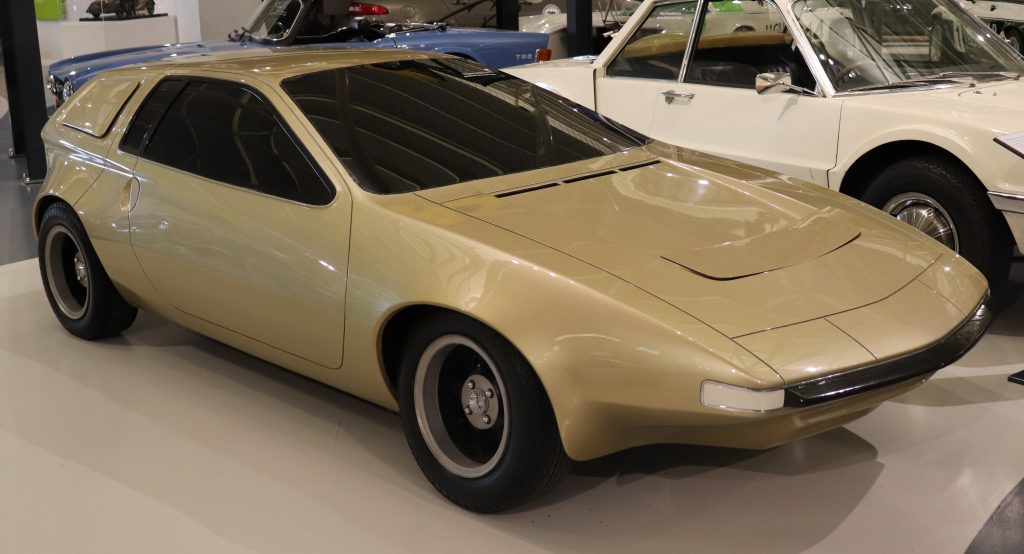
Author: Jon Burgess
Photography: Reallyloudphotos/Vikki White/Andy 7764 (Wikimedia Commons), AC Owners’ Club/Jon Burgess
In the late Sixties and early Seventies – before EEC membership ended Purchase Tax benefit on partially built component cars – powerplant choices were limited for fledgling British marques.
Compact, and soon to be available in quantity, the overhead-cam E-Series ‘fours’ and ‘sixes’ made sense: intended for front-wheel drive applications, with a sump-mounted, five-speed gearbox, swivelling the whole affair by 180 degrees and flipping the crown wheel put the ‘E’ to work in your new exotic.
Once mooted as an A-Series replacement, the ‘E’ had greater capacity, either as a 1.5- (or later 1.7-litre) four-cylinder (E4), or as a 2.2- (or eventual 2.6-litre) six-pot (E6).
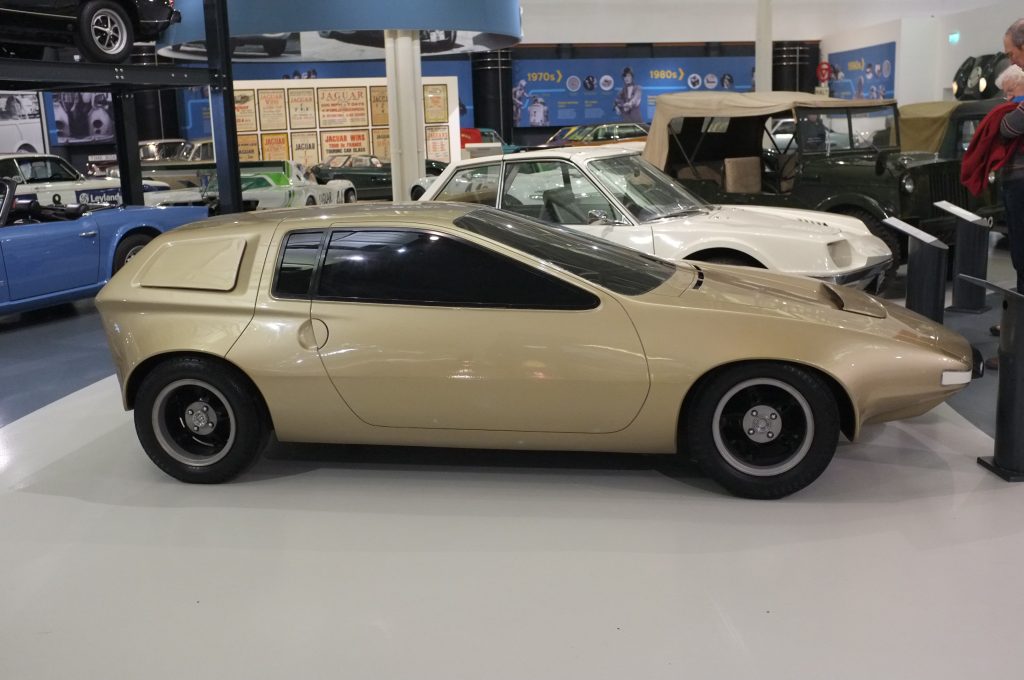
Austin Zanda (1969)
A not-for-production showcase for the talents of Pressed Steel and British Leyland Motor Corporation, the Zanda was its touring poster child. Planned around BLMC’s latest four-cylinder motor, contemporary advertising spoke of a ‘1500-1800cc transverse engine’ without naming the E directly.
Inspired by the Alfa Romeo Carabo, a Gandini-penned Bertone concept car that had wowed crowds the previous year, it was originally a similar shade of green to the Italian machine – but demonstrated how British design and styling teams could produce dream cars to the same standard. State-of-the-art tools (Computer Aided Design and Finite Element Analysis), created the Zanda in record time (BLMC claimed 27 hours).
Penned by late incumbent stylist Harris Mann, the same tall E Series engine/gearbox combination which distorted the proportions of the Allegro (another Mann motor) mattered not in the Zanda, as it helped create an elongated wedge, attenuated by a bluff tail.
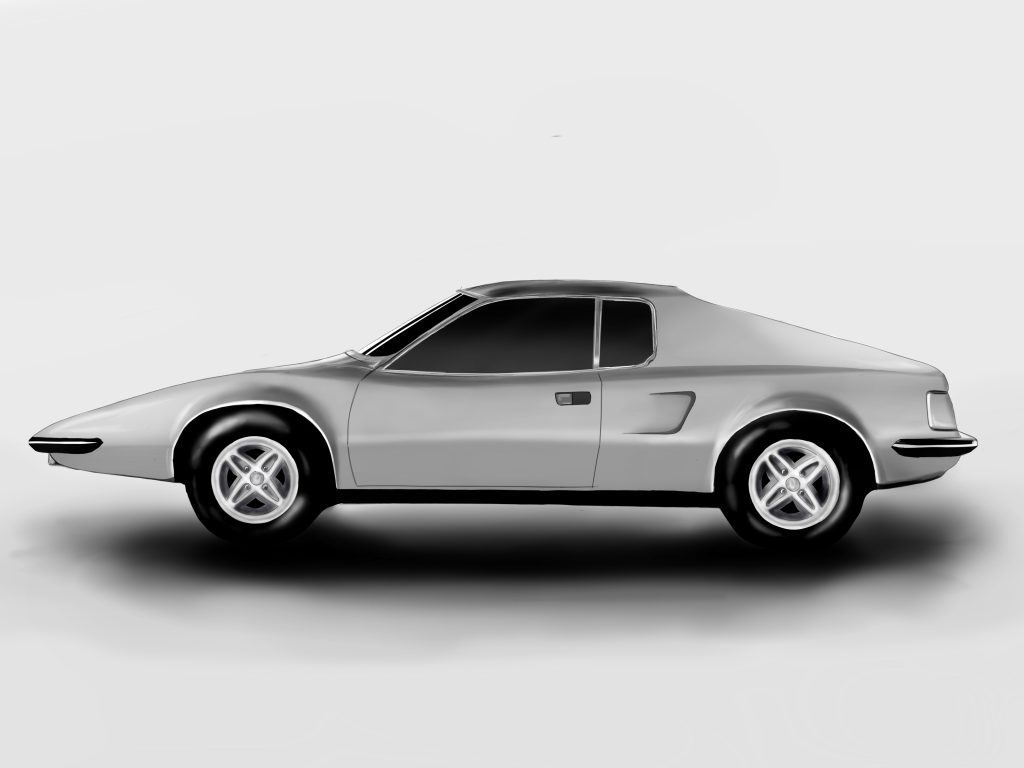
MG ADO21 ‘MGD’ (1969-70)
The ‘F’ wasn’t the first Moulton-suspended parts bin model to wear an MG badge.
In fact, it was Amalgamated Drawing Office 21, which began life as a radical new model intended to replace the MG Midget and Spitfire.
Like the Austin Zanda, ADO21 was a showcase of sorts: smaller, cheaper, more accessible mid-engined Italian cars seemed to be showing the direction in which the modern sports car was heading. The 1969 Autobianchi Runabout (birthed three years later as the Fiat X1/9) opined that a mid-engined layout need no longer be the preserve of supercar buyers.
ADO21, again by Harris Mann, would take the fight back to Italy, using the entirety of the E4 and E6 engine family to create a model range. BLMC soon realised that, with ADO21’s inherent sophistication – including Hydrolastic suspension, a de Dion rear end and dramatic styling – it would be better served as an MGB replacement.
A sweeping, boat-like prow, and a buttressed rear window disguised the height of the E4/E6 better than the Zanda. Despite its potential (and perhaps complications Federalising the E Series), ADO21 was too exotic for US dealers, who withered at the prospect of selling it as an MG.
They wanted a cheap, basic, live-axled, rear-wheel-drive car in volume: one that saved buyers money on the showroom floor (and in the service bay). Triumph’s competing Bullet/Lynx proposals fit that bill; suitably reskinned by Harris Mann, that new car became the Triumph TR7, furthering MG’s eventual demise.
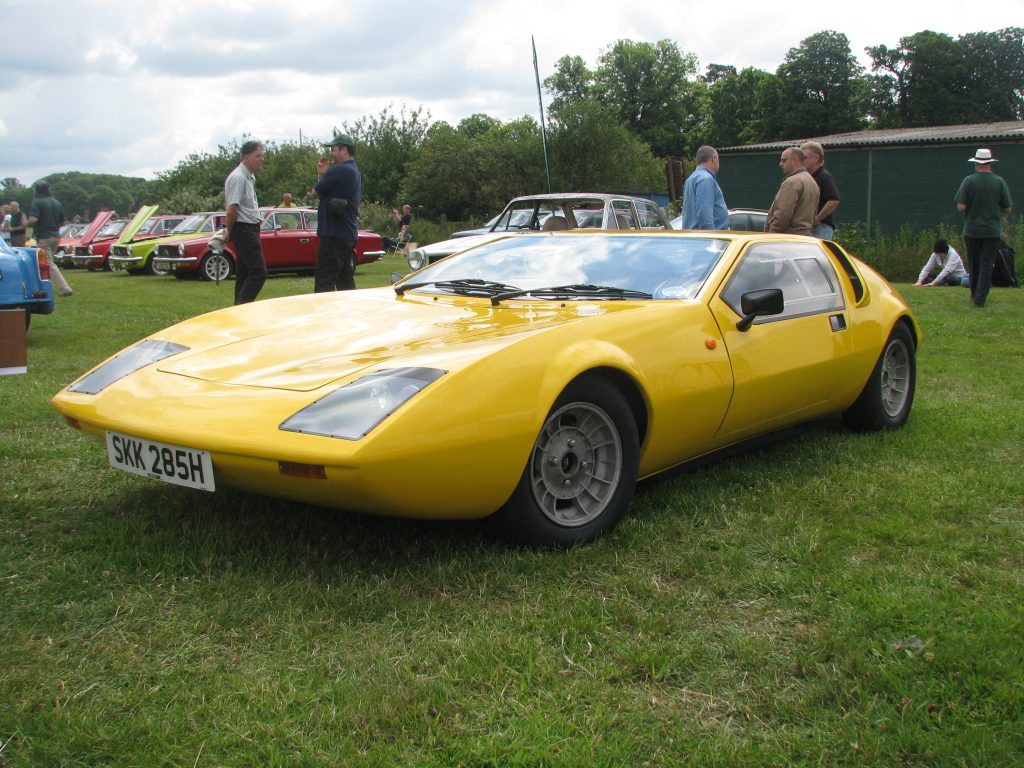
Gilbern T11 (1970)
Left unfinished by Gilbern’s Llantwit Fardre works as it slipped further into financial difficulties, the T11 remained a one-off, a valiant attempt to capture an emerging market similar to that of the still-born ADO21.
Gilbern had a ‘quality over quantity’ policy: its Genie and Invader GT models were sold as component cars, but were accomplished coupes and shooting breaks every bit as worthy as the competition. When the UK joined the EEC in 1973, however, its cars became prohibitively expensive.
Designer Trevor Fiore, was contracted to style the T11, but didn’t finish the job, owing to disagreements with Gilbern’s then-owner, Richard Collings.
Like other Gilberns, the T11 used a substantial tubular chassis over which a fibreglass body was attached – but crucial details omitted in the Fiore model meant that, extant, it lacked cut outs for the doors, and sufficient cooling for the Downton-tuned 1.5-litre E4 engine.
Happily, the one-off T11 survives today – albeit with a Toyota 3S-GE engine from a second-generation ‘W20’ MR2. The fragility and scarcity of cable-operated Maxi gearbox spares prompted its current owner, Gordon Johnston, to replace the E4, following an accident in 2011.
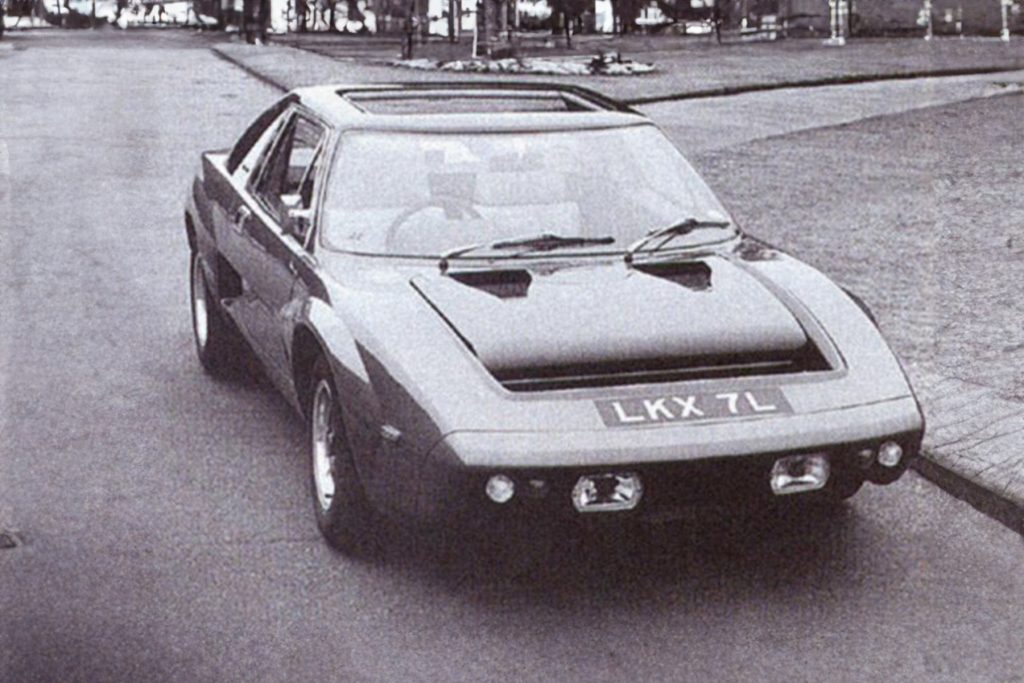
Bohanna/Stables Diablo (1972)
You know the Bohanna/Stables Diablo better as the AC 3000ME – as that’s what it became in 1978, with customer cars being delivered a year later.
But that car wasn’t the Diablo: while the 3000ME certainly resembled the Diablo, it used a transversely mounted Ford V6 and a different chassis.
The 1972 Diablo however, designed by Robin Stables (ex-Lola) and John Bohanna (formerly of Ford Advanced Vehicle Operations) used a spaceframe chassis and an interior designed by actress and model, Tessa Hood. Its 1.5-litre E4 engine, chosen because of its tight packaging, turned out to be one of its stumbling blocks; British Leyland, fully committed to Allegro production, refused to sell the firm any E-Series engines.
Despite favourable reviews at the 1972 Racing Car Show – prompting AC Cars to buy the rights – the Diablo was heavily re-engineered to see production, necessitating the only east-west installation of the Ford Essex V6 in a sports car. While the Diablo’s chassis and components survive today, its body was lost.
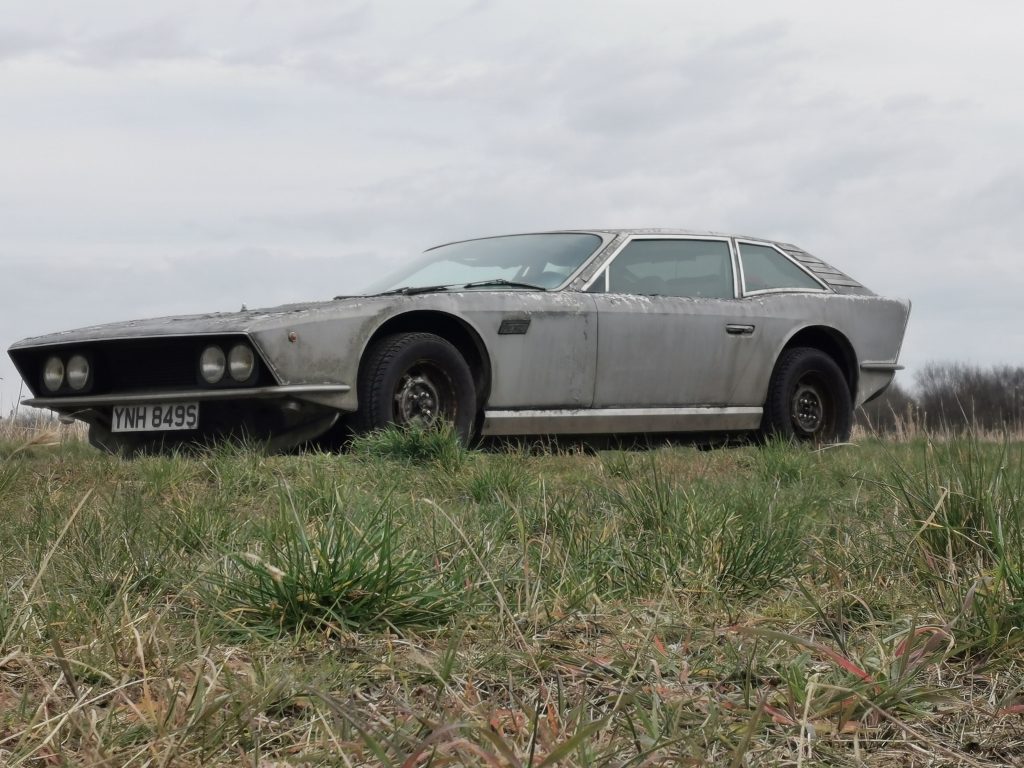
Furia/Rawlings Furia/Furia GT (1976)
Covered exclusively by Hagerty in 2022, the Furia was a one-off GT built by late Northamptonshire builder, yachtsman and hillclimber, Don (Joe) Rawlings, to his exact specification, comprising a stainless steel tubular chassis, de Dion rear suspension, and bespoke Triplex glass.
Unique among our five in using an automatic gearbox (albeit still sump-mounted), Rawlings chose the 2.2-litre E6 for the Furia, side-stepping the awkward cable-operated five speed manual, (whose mechanism Gilbern re-engineered for its T11).
Boasting a similar depth of engineering to the Australian Mirella 230TS, (a rakish, scissor doored, Austin Kimberley E6-engined special built by Dr Michael Clancy in the early Eighties), the Furia narrowly avoided the scrapyard after Rawlings’ death in 2020.
The Furia was rescued by Darren Collins of Dowsetts Classic Cars in 2022, where it will eventually return to the road.
Think we should have included another mid-engined British sports car in this list? Let us know at hdc@hagerty.co.uk